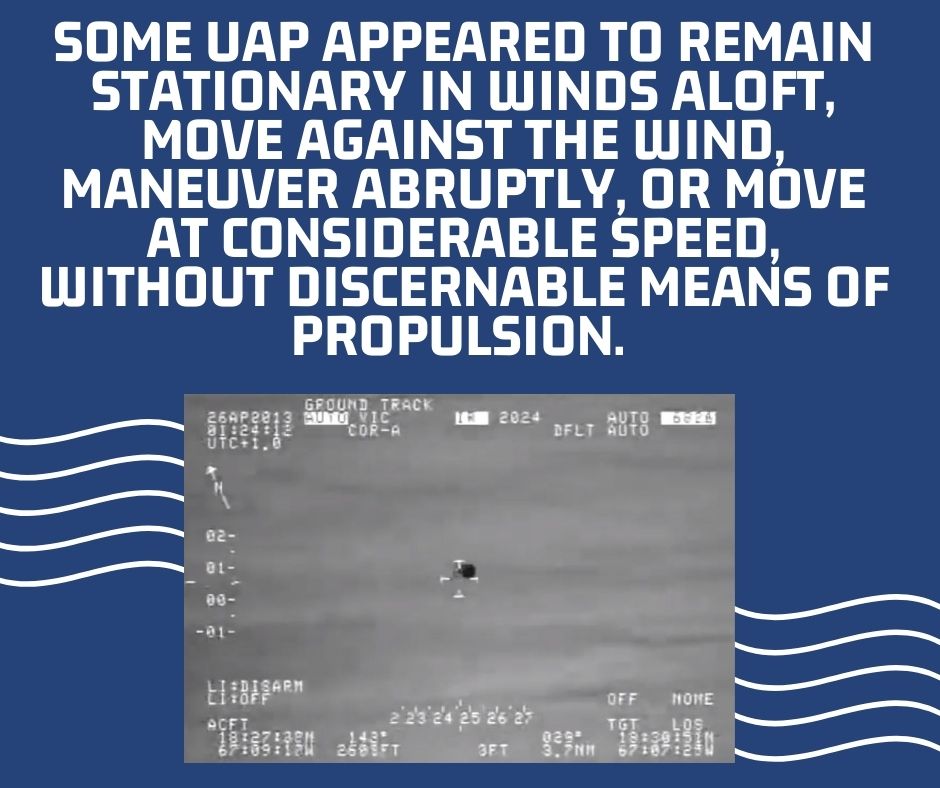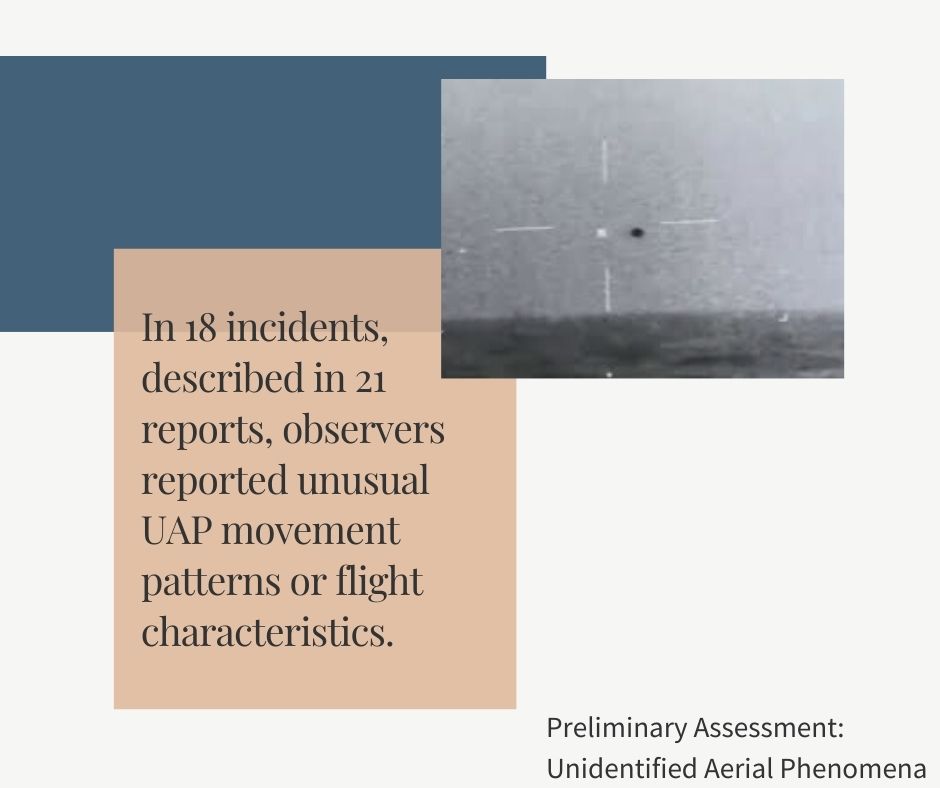This is not a UAP report. This is a UAP Task Force status report. Whether that’s what it should have been being another story.
The UFO Report tells us that the task force has identified 18 encounters with phenomena they can’t identify. These cases are given the designation of “other.”
There’s no video evidence or deep dive into any of these encounters. But it does give us insight into what the UAP Task Force has been up to.
Many thought the UAP Task Force was purely looking at these objects because they feared they were foreign adversarial systems.
The report makes clear this is not the case. There are, of course, foreign adversarial systems, and sometimes encounters with these systems are initially designated unidentified. But that’s not what this task force is about.
They are not simply trying to get more details on unidentified but presumed foreign craft. The UAP Task Force’s mandate is clearly to study reports on the truly bizarre encounters classified as “other.”

11 near misses with UAPs in recent years
Another similar concern is that the UAP Task Force exists solely to advance the threat narrative, the notion that we need to study these unknowns intensely because if we don’t, we could be in trouble.
The report throws cold water on that idea. Although the report does tell us that there have been 11 near misses with UAPs in recent years, that’s an aviation threat within the scope of the FAA.
There’s no indication that there’s any military threat posed by the phenomena.
A recent article by Tim McMillan of the Debrief makes this point even more clear. Tim interviewed Ray Mabus, secretary of the U.S. Navy, from 2009 to 2017.
During this time, we know the navy had a number of UAP encounters. Mabus confirms that these incidents reached his desk and that he never received a rational explanation. When I read this, I thought it insane.
Who would hear about something that could literally be an alien craft and then not relentlessly search for the answer?
Well, if your other priorities are keeping China and Iran in check while trying to avoid nuclear war with North Korea, benign objects dart around the skies.
Probably isn’t taking up a lot of mental cycle issues where real tangible lives are at stake come first, and so Mobis focused on the very real and very important priorities he had, and that’s essentially the tale of how all government officials treated the UAP issue.

The UAP Task Force is beginning to apply AI
Until now, the UAP Task Force Report is confirming that they are now taking the issue seriously, whereas previous reports were stifled by stigma and no reporting mechanisms. This started changing two years ago.
Because of this change, most of the UFO incidents studied by the UAP Task Force were very recent, but this doesn’t mean that historical cases are cold.
One of the most tantalizing details of the UAP Report was the hint that the UAP Task Force is beginning to apply AI and machine learning data mining techniques to historical data. This could be huge.
This would find anomalies in satellite data, things like “fastwalkers.” Could you imagine if historical satellite data from November 14, 2004, the day of the famous “tic tac” incident, revealed a “fastwalker” entering our atmosphere?
This could provide the corroborating evidence needed to determine the nature of these objects.
And we can now be sure that there are people in the government who are digging into this topic.
It’s not a balloon, and it’s not a wild goose chase. It’s a serious investigation that has a good chance of producing serious results.
So what’s next? Well, we need to press for regular updates from the UAP Task Force. They are doing very interesting things.
We also need to press for more information on the existing reports. We now know there are 21 of these, covering 18 encounters with these “others.” Let’s get them released.
There’s also a wealth of threads left completely untouched—things like metamaterials, incidents prior to 2000, and any theories to the nature of these “others.” We’re left to speculate on those topics.

Background to the UFO Report
The Office of the Director for National Intelligence has released a highly awaited report detailing the U.S. government’s assessments of military encounters with unidentified aerial phenomena (UAP).
The nine-page report, titled “Preliminary Assessment: Unidentified Aerial Phenomena,” details the results of an analysis of 144 reports drawn from United States government sources.
“Of these, 80 reports involved observation with multiple sensors,” the report states, adding that the majority of the incidents examined “described UAP as objects that interrupted pre-planned training or other military activity.”
“The Unidentified Aerial Phenomena Task Force (UAPTF) considered a range of information on UAP described in U.S. military and IC (Intelligence Community) reporting, but because the reporting lacked sufficient specificity, ultimately recognized that a unique, tailored reporting process was required to provide sufficient data for analysis of UAP events,” the report’s Executive Summary states.

